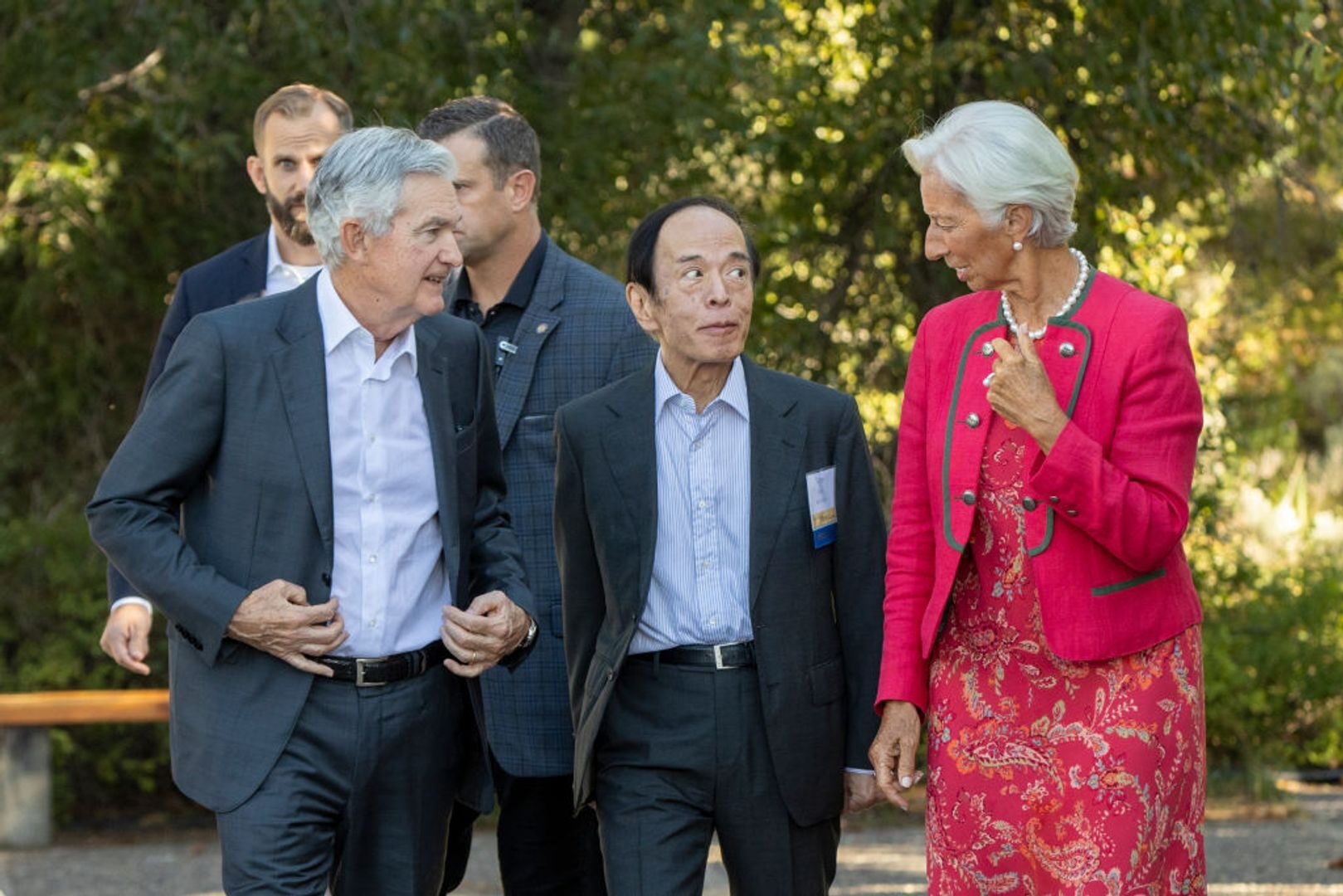Fed Chair Jerome Powell’s speech on Friday at this year’s Jackson Hole Economic Policy Symposium balanced rising inflation risk against a fragile labor market, and the political calendar now raises the odds that his eventual successor will be less cautious on rates.
Powell’s message was deliberately sober.
STORY CONTINUES BELOW
He said the “effects of tariffs on consumer prices are now clearly visible” and will keep filtering through with uncertain timing. Headline PCE inflation ran 2.6% in July and core 2.9%, with goods prices flipping from last year’s declines to gains.
He framed the labor market as a “curious kind of balance,” with payroll growth slowing to about 35,000 a month in recent months from 168,000 in 2024, while unemployment sits at 4.2%.
Immigration has cooled, labor force growth has softened, and the breakeven pace of hiring needed to keep joblessness steady is lower, which masks fragility. Net-net, he said near-term risks are “tilted to the upside” for inflation and “to the downside” for employment, a mix that argues for care rather than a rapid easing cycle.
He also reset the framework.
The Fed dropped 2020’s “average inflation targeting,” returned to flexible 2% targeting and clarified that employment can run above estimated maximum levels without automatically forcing hikes, but not at the expense of price stability.
He underscored, “We will not allow a one-time increase in the price level to become an ongoing inflation problem.” Policy is “not on a preset course,” and while September is live, the bar for a fast series of cuts looks high unless the data weakens more.
That macro stance lands inside a new political backdrop that markets cannot ignore. Powell’s current term ends May 15, 2026, and he has said he intends to serve it out. Donald Trump has attacked Powell and called for lower rates, but legal protections mean a president cannot remove a Fed governor or chair over policy disagreements.
Trump can announce his preferred replacement for Powell well before 2026, giving markets time to price in a chair who is likely to be more dovish and tolerant of growth risk than Powell. That looming shift matters for how the path of rates evolves into 2026, even if the next few FOMC meetings remain data dependent.
Political tension surfaced again on Friday when Trump publicly threatened to fire Fed Governor Lisa Cook over alleged mortgage fraud if she did not resign. Like Powell, governors have strong protections and can only be removed for cause. Markets read this less as an immediate governance threat and more as a sign that personnel pressure on the Fed could grow, increasing uncertainty around future leadership and communication.
The speech points to a slower, shallower easing path in the fourth quarter of 2025 unless inflation retreats convincingly. Tariff pass-through keeps goods prices sticky while services ease only gradually, which argues for front-end yields staying firm and the curve steepening only if growth data weakens.
A future, less cautious chair could compress term premiums later by signaling a quicker path to neutral, but between now and then, rate volatility stays high, and rallies are data-led rather than policy-led.
A careful Fed supports the soft-landing narrative but not a quick multiple expansion. Earnings growth can carry benchmarks, yet rate-sensitive growth stocks remain vulnerable to upside surprises in inflation or wages that push cuts further out.
If markets begin to price a chair who is more willing to ease into a warm inflation backdrop, cyclicals and small caps could catch a bid, but credibility risk rises if inflation expectations drift. For now, equities trade the gaps between each inflation print, payrolls update and Fed communication.
Crypto lives at the intersection of liquidity and the inflation story. A higher-for-longer stance curbs speculative flows into altcoins and crypto-related equities like miners, exchanges and treasury-heavy firms because funding costs stay elevated and risk budgets are tight.
At the same time, sustained inflation above target keeps the hard-asset narrative alive and supports demand for assets with scarcity or settlement finality. That combination favors bitcoin and large-cap, cash-flow-supported tokens over long-duration, storytelling-heavy projects until the Fed signals more conviction on cuts.
If a successor chair in 2026 is perceived as less cautious, the liquidity cycle could turn more decisively in crypto’s favor, but the price to get there is more volatility as traders handicap leadership, Senate confirmation and the data.
Even if the Fed trims rates in September, as it now seems highly likely, Powell’s framing implies a glidepath paced by inflation expectations, not market hope. Housing transmission is muted by mortgage lock-in, so small cuts may not unlock growth quickly.
Global easing elsewhere adds a marginal liquidity tailwind, yet the dollar’s path and term premiums will hinge on whether U.S. inflation behaves like a one-time tariff shock or a stickier process. In the former case, crypto breadth can improve and risk can rotate beyond bellwethers; in the latter, leadership stays narrow and rallies fade on hot data.
Markets now must price a two-stage regime: Powell’s cautious data-driven stance through 2025, then the possibility of a chair chosen by Trump who is less patient with above-target inflation if growth weakens, or more willing to accept inflation risk to support activity. Appointment constraints and Senate confirmation are real, so a wholesale pivot is not automatic, but the distribution of outcomes broadens.
For Treasuries, this can mean fatter term premiums until leadership is known; for equities, it can mean rotation and factor churn; and for crypto, it can mean a stronger medium-term liquidity story paired with choppier near-term trading.
Powell asked for time and data as tariffs lift prices and the jobs engine downshifts. Markets now have to trade that caution through the fourth quarter of 2025 while also discounting the realistic chance of a less cautious Fed chair in 2026.
That two-step makes the next year a test of patience in Treasuries, a grind in stocks and a volatility trade in crypto — with the payoff determined by whether inflation proves transitory enough for this Fed to cut, or persistent enough that the next one chooses to.

